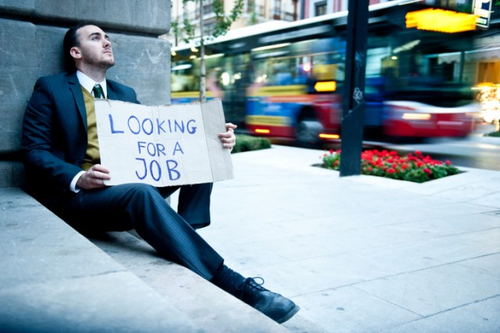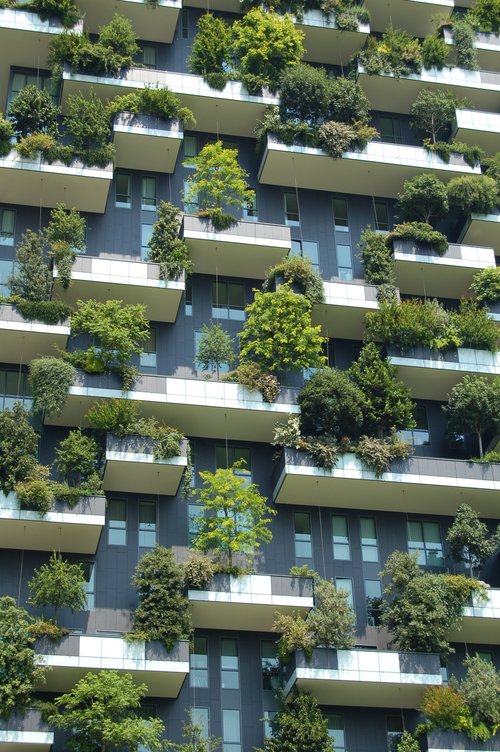Post-Covid-19 Crisis: Making Up The Differences
Monday, 06 April 2020By Chris Yapp
First, I hope that you are all staying safe and well. The shock waves of the last month will affect us all for many years.
For those of us who are not epidemiologists or essential workers, this is a useful time to think beyond the crisis and explore the kind of society and economy that we would wish to build and offer hope to friends, family and the wider society as we restart and rebuild, hopefully in a few months’ time.

In the spirit of “never waste a crisis”, a good starting point is to focus on the seemingly intractable challenges of the recent past that may now can overcome past barriers to change.
I believe that our attitude to inequality is one such challenge.
For many years now it has been an article of faith that “inequality is a price to be paid for a dynamic economy”. That was challenged back in 2009 in the public discourse by the publication of the Spirit Level. The claims and methodologies have been challenged by many. The link between inequality and health outcomes is supported by a broad consensus, but many other areas are still contested. The books of Thomas Piketty have taken the argument far deeper and to a broader audience.
My reading of the evidence is that too little or too much inequality has costs to the economy, so the question, for me, is how much inequality is equitable?
One consequence of the COVID-19 pandemic is that we have all discovered that many of the jobs which are low paid are the ones on which society is most dependent. Many Health and care workers are an obvious point, but also drivers, check out assistants at supermarkets, warehouse staff and agricultural workers. The argument that low income = low skilled needs to be revisited as part of the lessons from this pandemic. Many new forms of work in the gig economy turn out to not be resilient across the economic cycle. One of the best laughs I had in March makes the best take I’ve seen on the key worker = high income here.
I would urge us all to go back to first principles and ask an apparently simple question: “What do we mean by inequality?”.

If you do a Google search on “how do you measure inequality?”, there is a whole world of ideas out there beyond the most well-known measure, the Gini coefficient.
Of course, much of the evidence and the metrics to support these ideas are based on inequalities in income and wealth. The most developed strand in non-financial terms (though with significant economic impact) is inequality of opportunity and its impacts on social mobility.
There have been some sectors of the economy where inequality has been a feature for hundreds of years. A few authors, painters, actors and musicians can make a fortune while many, often the majority experience more famines than feasts. This has expanded to many other sectors of the economy and society in a “winner takes all “outcome. Think about Premiership Footballers, Celebrity Chefs, Gardeners and Journalists as examples.
What is the economic and moral argument that an actress playing a nurse in a TV soap could earn 10 times what a nurse earns? The simple argument that “that is what the market says” may no longer be acceptable in many societies and cultures.
Similarly, the CEO who earns multiples X100 of the median earnings of staff will need much stronger justification in the future, especially where many of those staff are on zero hours contracts.
The justification for such inequality is that these individuals take on great responsibility and bring great insight and leadership ability. So how many of these people planned for the pandemic and associated crash?
The argument supported by articles in the media is that this is a” Black Swan” event. That claim is frankly ridiculous. The UK national risk register has it as a known risk, the most impactful risk. See the graphic on Page 5. Ian Goldin, at Oxford, predicted that the next recession could be caused by a pandemic 6 years ago. His interview on BBC Hard Talk is sobering.
In my own training on scenarios and business continuity back in 2002, a Pandemic Flu was one of our exercises.
Beyond the economic field there are many other issues that need to be addressed. Access to services is one such topic.
In many Australian Cities, bus services in city centres are free. Living in a rural county, we have one bus service a day that does not work with local college timetables or hospital appointments. Although the study is of the USA, not UK, I would commend Robert Gordon’s book “The Rise and Fall of American Growth”. He describes with great clarity and evidence how each wave of innovation has impacted rural and urban life differently on different timescales. Similar patterns can be seen with cars, sanitation, electricity, TV, Health, Mail order catalogues and many others.
In Germany, rail fares have been cut to support environmental goals. In the UK rail fares rise to meet financial goals. Travel costs are a significant source of inequality of access to services in the UK.

An obvious current example is the urban/rural divide on access to fibre networks and mobile broadband. The Government chose to send messages to the nation via mobile phones. 96% of the population has access to a mobile phone, but that 4% includes some of the most vulnerable.
If we are to move forward in hope, we need to challenge the metrics we use today to ensure that they are fit for purpose. Let me illustrate with one example.
When I was growing up, aspirational parents would buy Encyclopaedia Britannica. It filled a good bookshelf. A good living could be made as an Encyclopaedia salesman. Of course, the value comes from reading the books. I am sure that for some families it was a status symbol, like a fine painting, rather than an opportunity for learning. Today we have Wikipedia, updated continuously and in many languages. I am not sure how many bookshelves it would occupy in any one language. So, it can be argued that information has been democratised.
However, a report in 2018 outlined the cost of digital exclusion at £21.9 bn.
If 10% of the population has access to email, it doesn’t matter much to the 90%. If, however 90% of the population has access, the depth of exclusion matters to the 10%. I am not confident that what we measure reflects the impact of exclusion as much as the numbers of excluded.
The closure of school can to some extent be alleviated by online learning. However, how many families with 3 children at home have 5 computers to enable parents and children to work and learn? An opportunity to “level up” access to learning may be lost to levels of exclusion.

Robert Gordon’s book provides strong evidence that the uplift in the US standards of living from previous innovations is over and that the rate of innovation has slowed down since the 1970s. This is contrary to much of the hype around innovation, but his argument is detailed and supported strongly by the evidence he presents.
In my previous post, I argued that all models are wrong. The best counter argument, for me at least, is in Carlotta Perez’s book “Technological Revolutions and Financial Capital: The Dynamics of Bubbles and Golden Ages”. Here she describes a series of historical patterns of Bubbles, where inequality rises, ending in crashes, such as the 1929 or dot com bubbles, followed by Golden Ages of rising prosperity more widely shared.
It is notable how many new metrics entered common usage at the start of past Golden Ages.
Carlotta’s argument is that the next Golden Age will be around Sustainable and Green technologies. I hope that she is correct. A combination of Gordon’s and Perez’s ideas and insights is my offer to kick start the rebuilding.
Stay safe and strong. Let’s use the time wisely to plan for a better future.